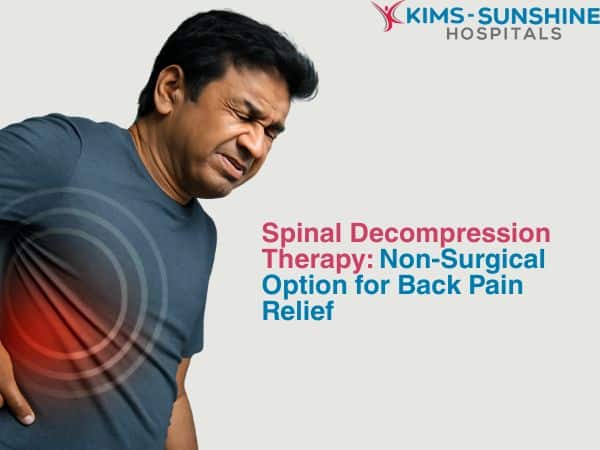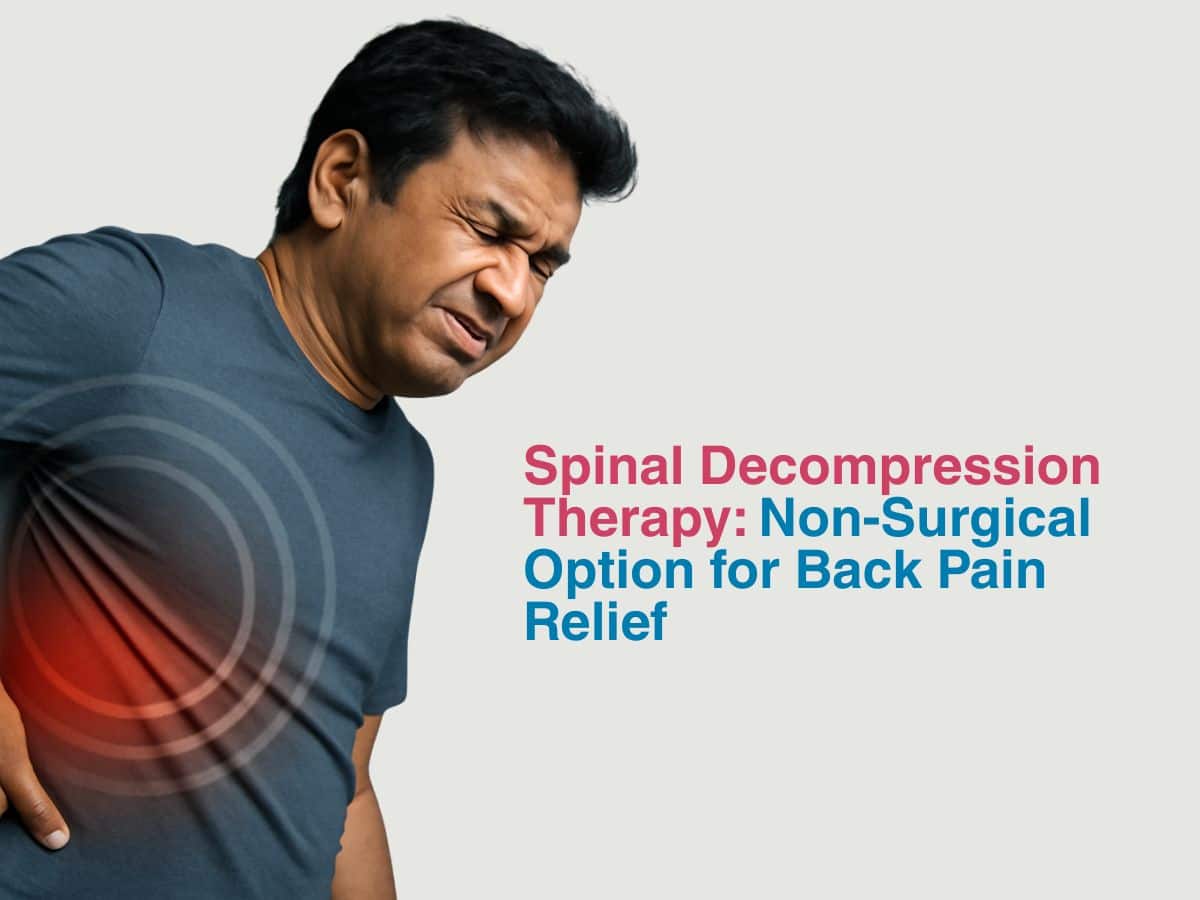
Spinal Decompression Therapy: Non-Surgical Option for Back Pain Relief
Back pain is a condition that almost all individuals face at some point in their lives and this is a significant public health issue in India, with statistics saying that almost 66% of the population suffers from back pain some time in their life. The main causes for it include sedentary jobs with poor posture, high BMI, not getting enough exercise, being overweight and having other conditions which can exacerbate back pain- like sciatica. Spinal decompression is a non surgical procedure aimed at helping you get better in a few sessions, so let us look at what it is, in greater detail below.
What Is Spinal Decompression Therapy?
Pain is caused in the spine because nerves are getting compressed at some point and the pressure can happen due to normal wear and tear, overt injury or some other condition. Spinal decompression is hence a method used to relieve pressure and reduce pain, by using a motorised traction assembly. This means it can be used to treat herniated discs, bulging, degenerative discs, stenosis or even sciatica. You are asked to lie down on a table and then fitted with harnesses to hold you in position. The table is designed in such a way that it has a motor which runs and creates traction- which means it will gently stretch your spine, resulting in reduced pressure and lesser pain eventually. You will need a number of such sessions spread out over a few weeks, depending on how severe your condition is. You may also be given other therapy like ultrasound, heat or cold therapy and electrical stimulation at times.
Spinal Decompression vs. Surgery
Spinal decompression can be non-surgical or non-invasive, if you can deal with less amounts of pain. But, if the disk is too worn out or if there is chronic pain that refuses to go away and affects your quality of life negatively, then surgery may be the only option left for you to try. Surgery can be invasive and recovery takes a long time. Some types of surgical decompression procedures include laminectomy, foraminectomy, corpectomy, diskectomy or removal of any bony spurs or growths- called osteophyte removal, respectively. Since it is major surgery, talk to your doctor about possible risks and issues in detail.
Who Should Avoid Spinal Decompression Therapy?
Don’t get this procedure done if you have a fracture, any abdominal aneurysm, have metal implants from previous procedures, a tumour or if your osteoporosis is pretty advanced. Avoid it if you are pregnant as there is no sufficient evidence on how effective it may be then. Stick to massage and hot or cold therapy only.
Conclusion
Spinal decompression is a pretty good alternative to try if you have chronic back pain that does not go away, but is not so severe that only invasive surgery can fix. Your doctor will do detailed tests, imaging and take a medical history to see which therapeutic option will work best for you. Bone scans may also be done in many cases to check what is going on in the spinal column. Conservative treatments are tried at first, before more radical measures are taken.




